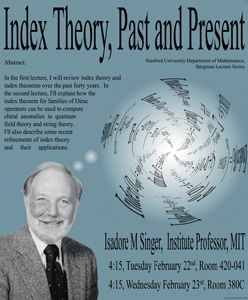
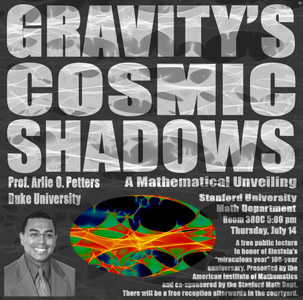
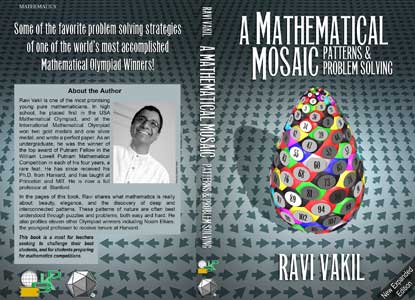
| Colloquium Posters |
At the start of Fall quarter 2002, Persi Diaconis asked me to make a poster for the first of a series of talks in the math department here at Stanford. I got the job to do a poster for each one throughout the year. The process involved finding whoever was giving the talk and getting some sort of image to use, either from them directly or getting the idea for some sort of image that I can make or get from somewhere else. Some sort of relevance to the subject of the talk occasionally happened too...
Since then I have collected the occasional mathematical poster here. Chronological order is left to right and bottom to top. Beware that some of the images are rather big.

|

|

|
| Tricky one this, with no obvious relevant pictures, and even just a pun on the words is hard...'Index' isn't a very visual concept any way I could think of. The subject does have a bunch of concisely stated and closely related theorems though. Many results come out of the core index theorems, hence the whirlpool/big bang idea. | The 'shadows' are formed when light passes through a plane of gravitational attractors, gets distorted and forms into cusps and so on in the image. | Ravi Vakil asked me to do the cover for the second edition of his book of the above title, published in October 2007. There are many many features in the pictured pinecone and the arrows background coming from my discussions with Ravi, and which one should really buy the book to appreciate! The pinecone was prototyped in Second Life and rendered in Rhinocerous with the assistance of Bathsheba Grossman. The background was generated using a Python script. |
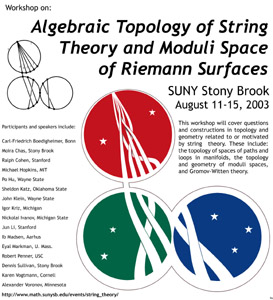
|
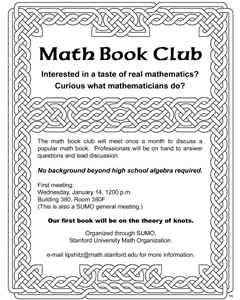
|
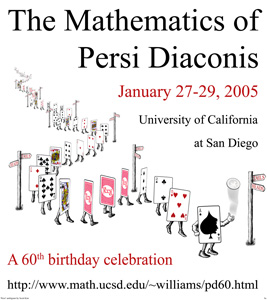
|
| Ralph Cohen asked me to do this poster for a workshop he is helping to organise at Stony Brook. The diagrams illustrate the construction of a 'fat graph', a technique often used in the subject. The main diagram also bears a passing resemblance to the Stony Brook logo. | A black and white image because the poster was to be photocopied. I used The Celtic Knot Font for the border. Incidentally, Celtic knots are usually alternating knots (as this one is (unless its a link, I have never checked)). | Brainstorming with Susan Holmes resulted in this, incorporating a random walk, coin tossing, cards (as in "Alice in Wonderland"), Persi's business card from when he was a magician, and an ambigram by Scott Kim. I used my graphics tablet to draw many pairs of legs, but there is plenty of cheating going on too. |
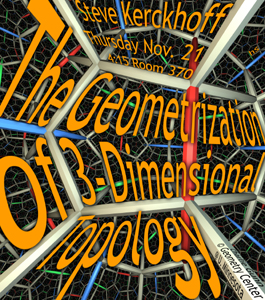
|
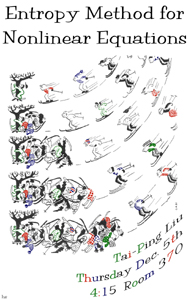
|
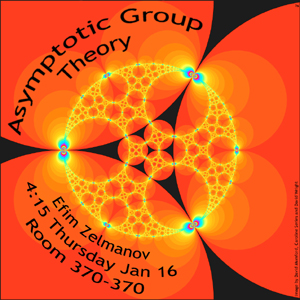
|
| This comes from the Geometry Center at the University of Minnesota. It's a snapshot from the video 'Not Knot', this part of the video by Charlie Gunn. | Tai-Ping supplied the cartoon, which has something to do with shockwaves. I coloured it a little, trying to keep with the style and added the text. | Zelmanov was the first visiting speaker, and partly as a result, I didn't have the title until late on, and no image either. The picture does have something to do with infinite groups, but otherwise didn't have much to do with the talk. |